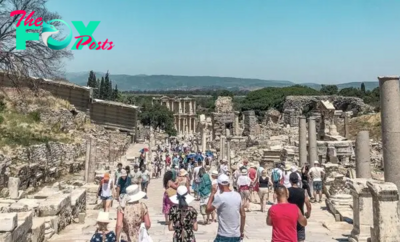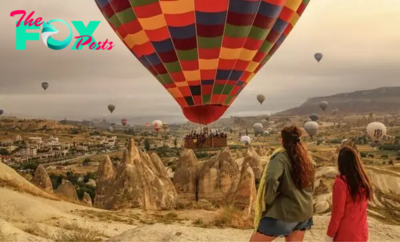Travel
Visiting Hierve el Agua: Oaxaca’s Frozen Waterfall
Sitting 70 kilometers east of the charming city of Oaxaca in Mexico, Hierve el Agua is a natural rock formation of natural spring rock pools and frozen waterfalls. Locals and tourists have been flocking here for some years for a dip while looking out over Oaxaca’s stunning mountain ranges.
Hierve el Agua recently reopened to visitors after a closure due to the pandemic, and it hasn’t taken long for people to start flocking back to see one of the finest natural sites in all of Mexico.
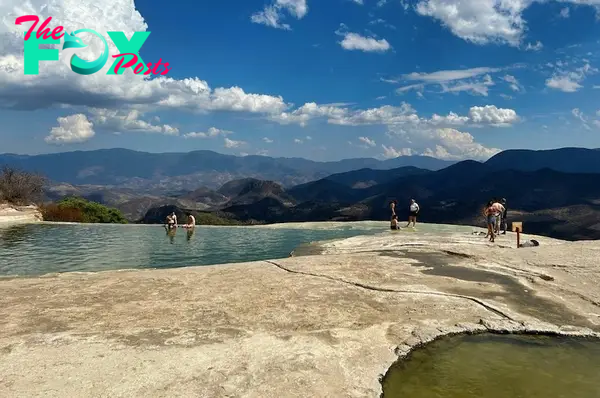
You can either visit Hierve el Agua with or without the help of a tour company. I did it without a tour company and found it to be quite easy as long as you know where you’re going. Plus, it’s much more affordable than taking a tour.
In this article, I’m going to give you a full breakdown of what you need to know about taking a day trip to Hierve el Agua, including how to get there, total costs and the key highlights.
Let’s show you how to take a day trip to Hierve el Agua!
The Background Behind Hierve el Agua
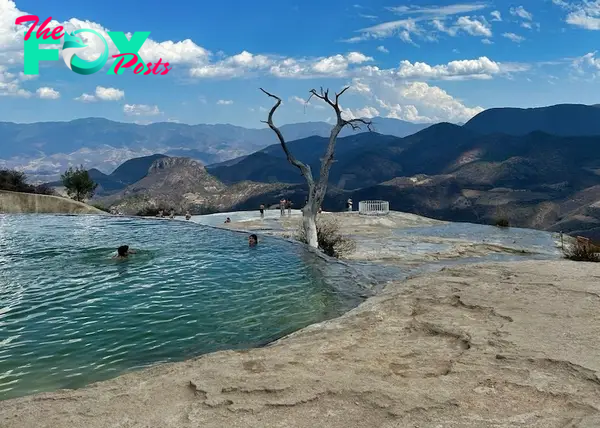
Before you arrive at Hierve el Agua, I must give you some background of how it was formed because a lot of people just go for the views, which are beautiful in their own right; however, the background of this natural site is well worth learning about.
The name ‘Hierve el Agua’ in English translates to ‘the water boils,’ but that doesn’t mean the water in the rock pools is hot; in fact, when I was there, it was the opposite.
Hierve el Agua dates back thousands of years; experts have suggested that it was formed by spring water leaking from the limestone rock. Over time, the water solidified, creating the two Petrified Waterfalls, which are the main attraction here.
The two Petrified Waterfalls are different in size, and it’s quite evident when you see them. Locals know the larger one as ‘Cascada Grande’, and it’s around 90 metres in length. As you can probably imagine, the smaller one is called ‘Cascada Chica,’ and it’s known only around 50 meters high.
Is Hierve El Agua Open?
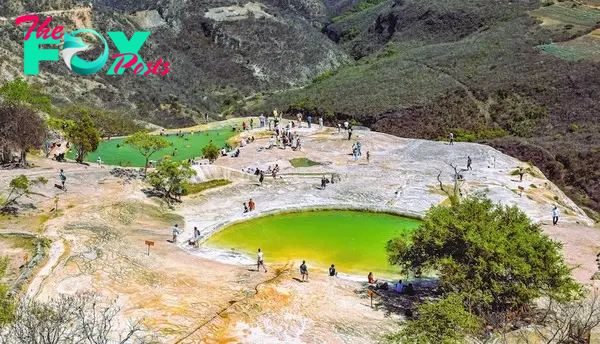
This question has been floating around online through various forums and Travel groups. The answer is yes; Hierve el Agua is open in 2024!
Before I arrived in Oaxaca, I was unsure if I was going to get there at all after reading so many mixed things online. When I arrived in Oaxaca, I asked around to see what was going on. However, after getting confirmation from the receptionist in my hostel, a barista in the city and a bus driver, I knew I was going to get to see it.
Hierve el Agua closed during the pandemic, but it reopened a while later when Mexico started accepting tourists again. There were some rumblings that the locals were apprehensive about allowing tourists back to see it because, before the pandemic, the site was not respected. The locals weren’t making a fair return on allowing people onto the land.
Since then, a fee has been added to put some money back into the local economy, and for the upkeep of the area, so your funds are going towards a good cause.
How to Get to Hierve el Agua

As I mentioned in the intro, there are two ways to get to Hierve el Agua: either by public bus or with a tour company.
If you want to take the bus, you must get it from the local baseball stadium in Oaxaca called Estadio Eduardo Vasconcelos. Stand on the side of the road as if the traffic was heading north and wait for one of the buses to stop. When they stop, ask them if they are going to Mitla; that’s where you need to go. I paid 20 pesos one way.
Once you get on, the ride should only take a little over an hour. Download the offline map on Google Maps to see when to get off; the driver will scream it anyway. When you get off, there will be colectivo drivers there asking you if you want to go to Hierve el Agua; say yes, and they’ll send you into an office to wait.
They don’t leave until they’ve filled the vehicle but it usually fills fast, so don’t worry. You should pay 150 pesos for a return ride and an extra 50 pesos for the entry fee.
The other option is to go on an organized tour; I avoided this as the tour makes many unnecessary extra stops at attractions I didn’t want to visit.
Mitla to Hierve El Agua
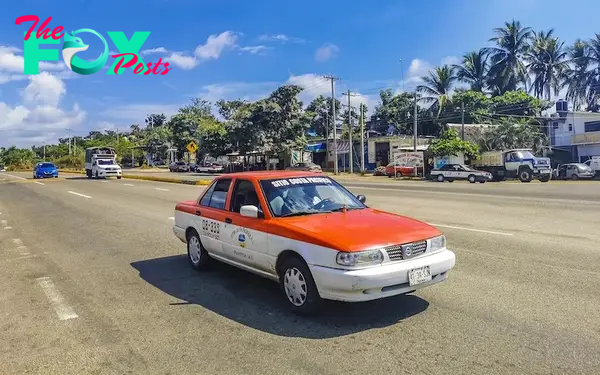
After a short time waiting for your colectivo ride, you’ll finally depart for Hierve El Agua. This is one of the best parts of the whole trip because the colectivos all have trailers in the back, which you can sit in on the way up. I sat inside the vehicle on the way up and snagged a seat in the trailer on the way back, and it was so much fun. Beware, though, this is a seriously bumpy ride up through the mountains, so hang on tight!
The drive up to Hierve El Agua from Mitla takes around an hour. I’ll warn you in advance: if you’re not a fan of heights and scary roads, this journey may slightly unsettle you. Some drop-offs at the mountains’ edge are pretty big, and there aren’t many barriers.
Luckily, the drivers take the journey seriously and drive slowly and carefully, which is reassuring, especially for someone not used to this type of thing.
Your driver will take the entrance fee and the colectivo fee from everyone before you get in the vehicle and leave. When you want to come back down from Hierve El Agua, there will be a colectivo stand beside it, which you can wait at until the drivers come along to fill up their vehicles and go back to Mitla.
Pro Tip: Bring a small change with you to pay; the drivers often don’t have much change to give back. Also, they don’t accept debit or credit cards.
The Rock Pools at Hierve el Agua
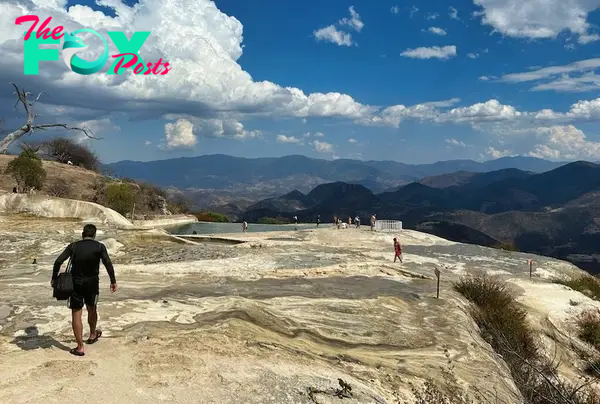
The first part of Hierve el Agua you’ll see is the breathtaking rockpools. When you first set your eyes on them, you’ll be immediately blown away by their infinity pool style and the rugged mountains sitting as the backdrop.
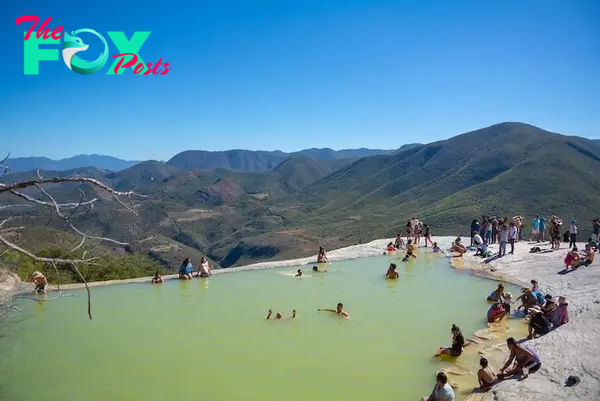
You can swim in all of them, so don’t forget your swimwear. I thought they would be warm when I visited, but it was the complete opposite; I was shaking the moment I jumped in, but I adapted to the ice-cold water after some time.
Pro Tip: I recommend you bring your own food with you, but be careful for the stray dogs lurking around because once they smell the food, they won’t leave you alone. Don’t worry if you forget food though, there are plenty of little comedors next to the pools.
The Petrified Waterfalls

Another one of Hierve el Agua’s most notable attractions was the mesmerizing Petrified Waterfalls. If I were to sum this natural formation up in one way, it would be a frozen waterfall. You can still see the shape of the water falling off the edge of the mountain, but it’s in limestone form.
They were shaped by mineral-rich spring water running off the cliff’s edge, but it dried up over the years to form the Petrified Waterfalls. The process is very similar to the way stalagmites and stalactites are made.
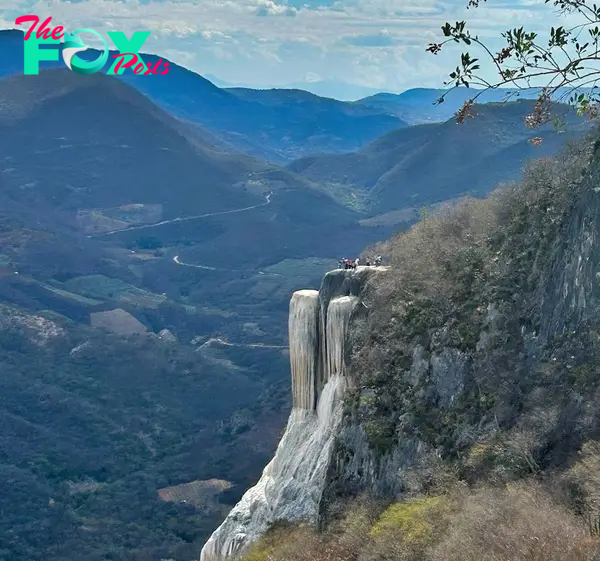
There are a couple of vantage points where you can see the Petrified Waterfalls. One of them is to the right of the rock pools, as if you were looking toward the mountains. The other is about a 10/15 minute walk away from the rock pools.
To get there, you should stay on the same path as if you were walking toward the rock pools, but stay on it and follow the steps. Just keep looking left the whole time you walk until you come to a clear spot without trees, and you’ll be able to see another one of the Petrified Waterfalls.
Pro Tip: Bring plenty of water to the second viewpoint because the walk back up is lightly strenuous.
How Much Does a Visit to Hierve El Agua Cost in Total?
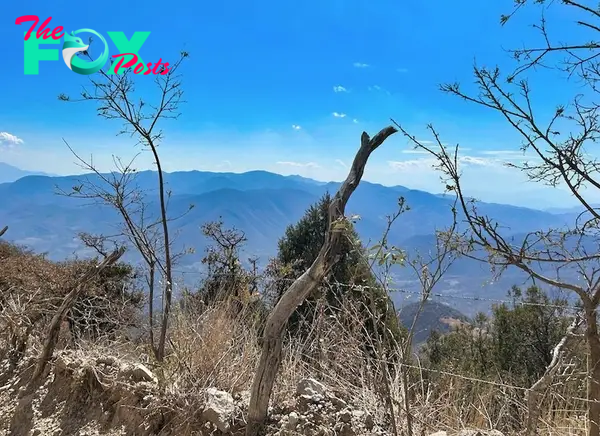
A visit to Hierve el Agua can be as cheap or as expensive as want it to be.
Below is a breakdown of the prices of the two methods of getting to and from Hierve el Agua.
In total, I paid 40 pesos for my bus journey to and from Mitla, 150 pesos for the return colectivo from Mitla to Hierve el Agua, and an extra 50 pesos for the entry fee onto the land to see the site.
This adds up to 240 pesos, which is around 13 euros overall. For a half-day trip out of the city in nature, seeing one of the most stunning attractions in Mexico, I couldn’t complain about that price.
If you want to go on an organized tour with a local guide, you should expect to pay over 900 pesos, which equals to over 50 euros. Bear in mind these excursions usually include more than one stop, so you get a full-day trip, but it depends if you’re interested in the places you stop at.
The tours I was looking at included stops at souvenir shops and a Mezcal tasting, which I knew I could do already in Oaxaca without spending the extra money.
-

 Travel18h ago
Travel18h agoThese 11 Destinations Are So Stunning, They Don't Seem Real
-

 Travel1d ago
Travel1d agoAn Insiders’ Guide to Boston's Chinatown — Where to Eat and Drink
-

 Travel5d ago
Travel5d ago9 Best Places to Live in Ohio, According to Local Real Estate Experts
-

 Travel6d ago
Travel6d ago28 Hidden Wonders of the World
-

 Travel1w ago
Travel1w agoYou’ll Soon Be Able to Stay The Night in a Nakagin Capsule
-
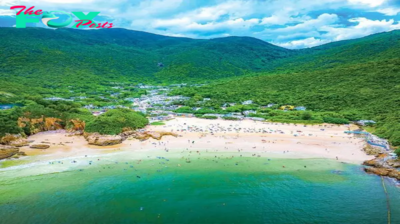
 Travel1w ago
Travel1w ago9 Beaches in Hong Kong With the Most Stunning Views
-

 Travel1w ago
Travel1w agoThis New Airline Caters to Jet-Setting Pups
-
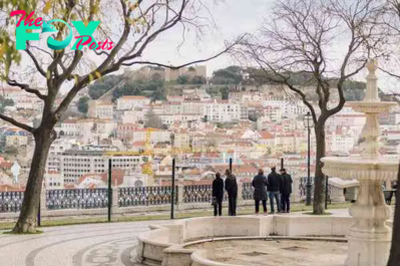
 Travel1w ago
Travel1w ago9 Best Places to Live in Portugal, According to Local Real Estate Experts


